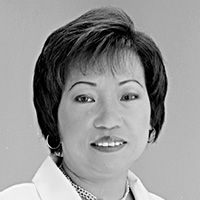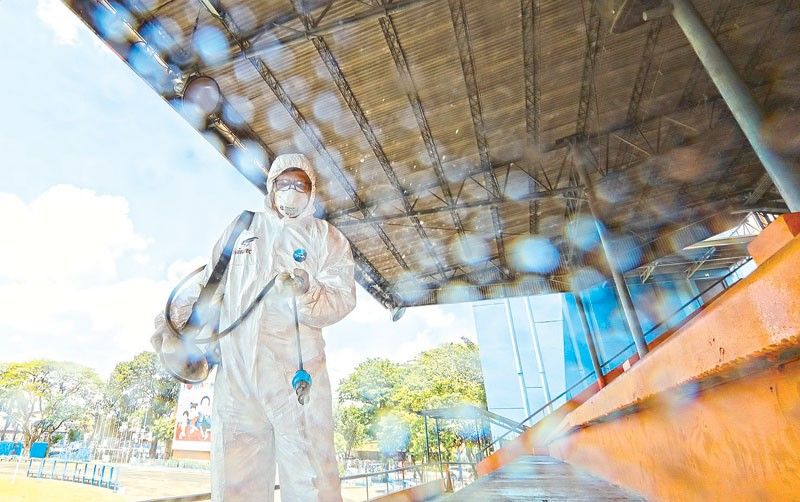COVID-19 outbreak: Panic vs. calm


With the World Health Organization (WHO) declaring the coronavirus disease 2019 or COVID-19 a pandemic and the whole of Metro Manila placed under community quarantine, the common reaction of people is anxiety, panic and fear. These are normal reactions to an abnormal situation.
Baseless speculations trigger more intense emotional reactions. The earlier fear of a possible lockdown in Metro Manila led to panic-buying for disinfectants and canned goods. Supplies of masks had actually already dwindled with the recent Taal Volcano eruption, and the current lack of mask supplies further increased the anxiety of Metro Manila residents.
What should we do to stay calm and to allay our fears and anxieties about this COVID-19 outbreak?
1. Be informed. Get the right information and updates from the experts and reputable sources like the Department of Health (DOH) and the WHO.
2. Learn how to avoid and prevent exposure to this viral infection.
Here are some basic facts about COVID-19 based on the report of the WHO-China joint mission on COVID-19 and The Medical City advisory:
1. COVID-19 is a virus that is transmitted via droplets and fomites (inanimate objects when contaminated with or exposed to infectious agents can transfer disease to a new host) during close unprotected contact between the “infector” and the “infectee.” Airborne transmission has not been reported.
2. Human-to-human transmission largely happens in families.
3. The clinical manifestation in children appears to be mild and most infected children were identified via contact tracing in the households of infected adults.
4. The usual signs and symptoms of COVID-19 are:
• Fever
• Fatigue
• Dry cough
• Sputum production
• Shortness of breath
• Sore throat
• Headache
• Myalgia (muscle pain) or arthralgia (joint pain)
• Chills
• Nausea or vomiting
• Nasal congestion
• Diarrhea
• Hemoptysis (coughing out of blood)
• Conjunctival congestion (pink or red color in the white of the eyes)
5. Above signs and symptoms develop five to six days after infection.
6. Persons at highest risk for severe disease and death are:
• 60 years of age and above
• With underlying conditions like hypertension, diabetes mellitus, cardiovascular disease, chronic respiratory disease and cancer.
• Highest mortality rates in people over 80 years of age.
Here are the government’s COVID-19 advisory-alert levels:
• Alert Level 1: Code White — It will be raised when there is a suspected or confirmed case outside the country.
• Alert Level 2: Code Blue — It will be raised when there is a report of even one imported case in the country.
• Alert Level 3: Code Blue — When the WHO declares Public Health Emergency of International Concern, this alert level will be raised.
• Alert Level 4: Code Red Sublevel 1 — It will be raised when there is a report of even one case of local transmission.
• Alert Level 4: Code Red Sublevel 2 — This level will be raised when there is an evidence of community transmission and continued increase and spread of cases that the government may have difficulty in handling.
How should the public respond to COVID-19:
1. Stay calm but alert.
2. Cooperate with the government’s contact tracing.
3. For those with symptoms with a history of travel or exposure, consult at the nearest health facility.
4. Follow closely home quarantine procedures.
5. Perform preventive measures like hand washing and cough etiquette.
6. Support the government’s efforts in preventing community transmission by listening and following advisories of the DOH.
How to avoid COVID-19 (from the TV Patrol Advisory):
• Stay healthy
- Get enough sleep
- Exercise
- Eat healthy food.
- Take vitamins that help boost immunity.
• Stay clean
- Avoid unnecessary physical contact.
- Keep hands away from eyes, nose and mouth.
- Wash hands after going out in public.
- Use disinfectants on hands and surfaces.
• Stay ready
- Keep hygiene products.
- Have common medicines handy.
- Create an emergency contact list.
• Stay away
- Avoid crowded places.
- Avoid hospitals unless necessary.
- Avoid public gatherings
According to WHO, reduce your risk of infection by frequently cleaning your hands by using alcohol-based hand rub or soap and water. When coughing or sneezing, cover your mouth and nose with flexed elbow or tissue — throw tissue away immediately and wash hands. And avoid close contact with anyone who has fever and cough.
If you’re still anxious despite getting the above basic information about COVID-19, learn to relax and try calm breathing (www.anxietybc.com/sites/default/files/CalmBreathing.pdf).
1. Take a long, slow breath in through your nose, first filling your lower lungs, then your upper lungs.
2. Hold your breath to the count of three.
3. Exhale slowly through pursed lips, while you relax the muscles in your face, jaw, shoulders and stomach.
Good news, the Food and Drug Administration has allowed the use of COVID-19 Test Kits developed by our local scientists of University of the Philippines National Institute of Health (UP-NIH) for field testing, coupled with gene sequencing at the Philippine Genome Center. The test kits are funded by the Department of Science and Technology. These test kits will be rolled out to the local hospitals pending clearance and approval by WHO.
(For the latest WHO health advice, visit www.who.int/COVID-19. Below are the contact information of DOH and the abovementioned hospitals: Department of Health: www.doh.gov.ph, contact numbers 8711-1001 and 8711-1002; San Lazaro Hospital: sanlazarohospital@yahoo.com, contact numbers 8732-3778, 8732-3776 and 8732-3174; Research Institute of Tropical Medicine: info@ritm.gov.ph, contact numbers 8807-2631, 8807-2632 and 8807-2637; Lung Center of the Philippines: lcp.gov.ph, contact number 8924-6101.)
(E-mail this author at nina.halilijao@gmail.com.)















